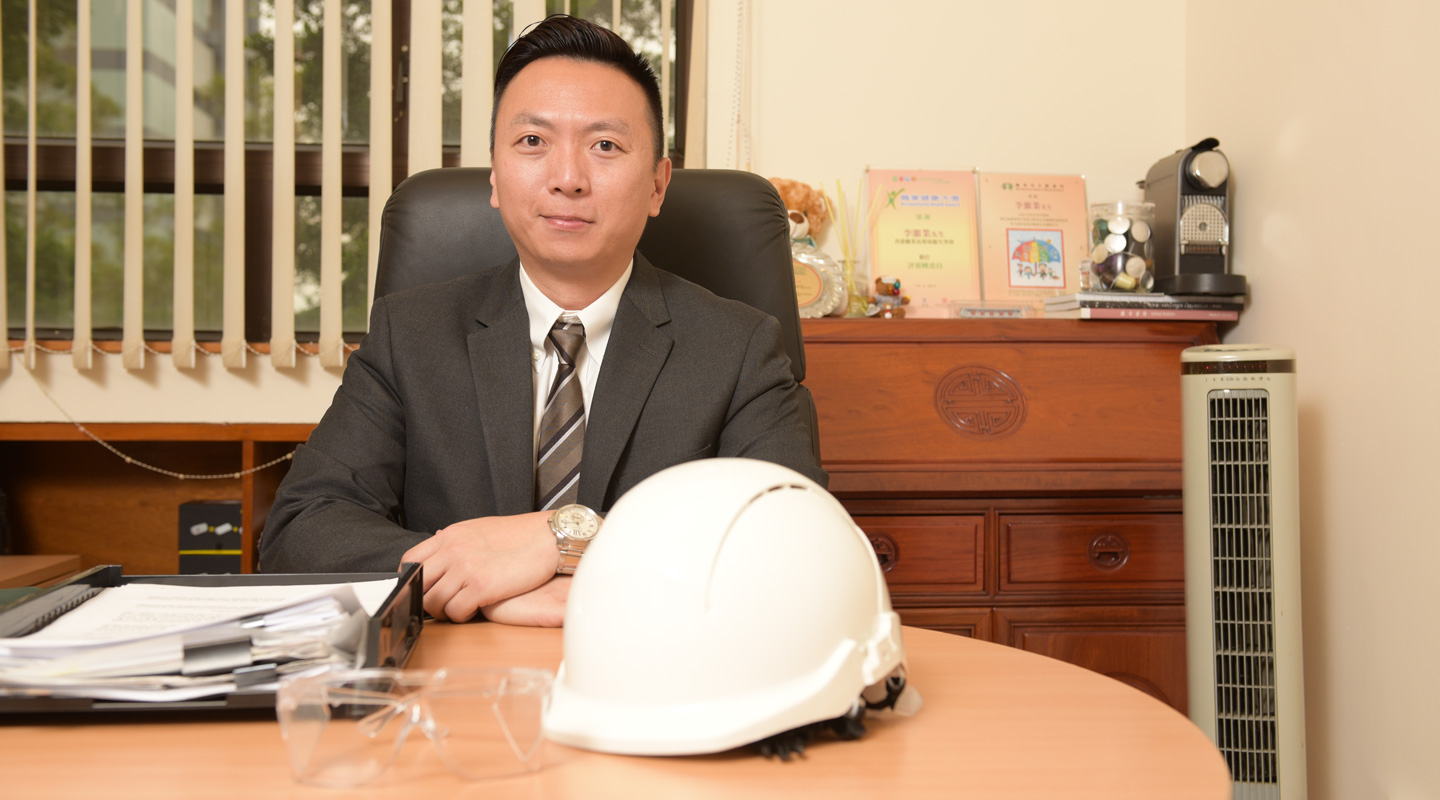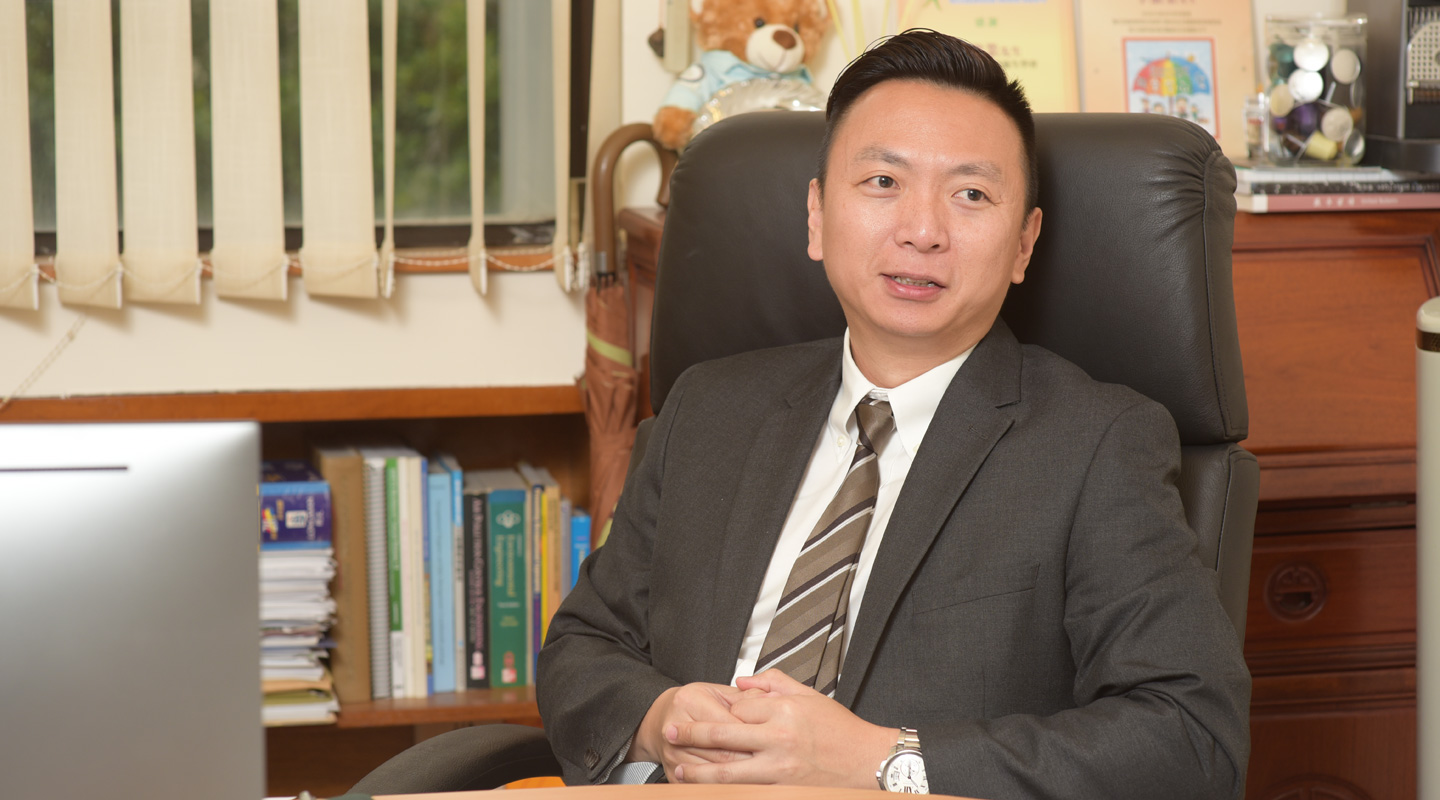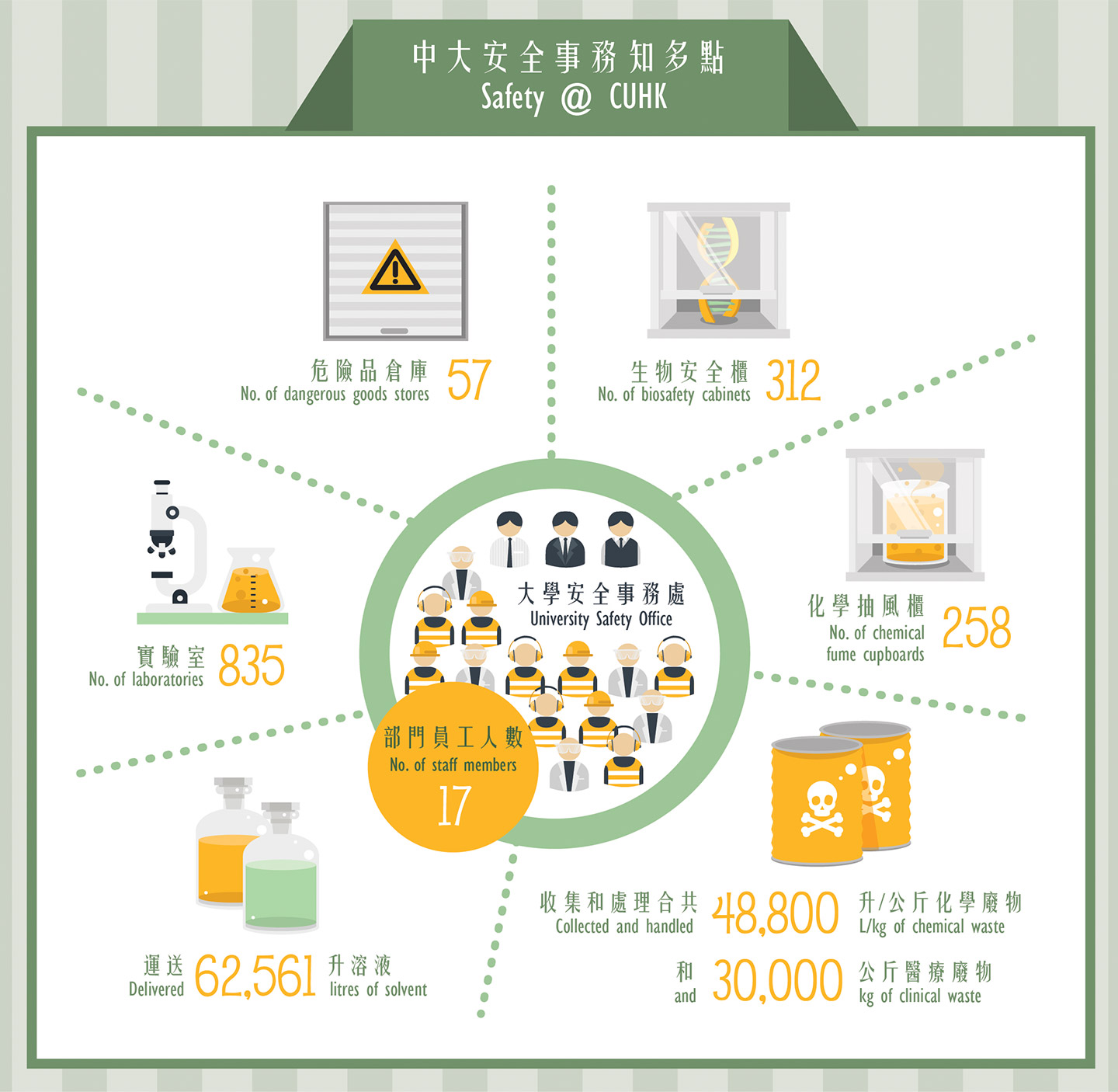Dear readers, With the launch of e-newsletter CUHK in Focus, CUHKUPDates has retired and this site will no longer be updated. To stay abreast of the University’s latest news, please go to https://focus.cuhk.edu.hk. Thank you.
Ralph Lee’s Safety Nets

Mr. Ralph Lee
Being an experienced safety professional, how would you define ‘safety’?
‘Safety’ casts a wide net and covers construction sites, labs, canteens and offices etc. It also addresses occupational health hazards such as contact or inhalation of dangerous chemicals in the labs and musculoskeletal disorders in computer users arising from improper posture and workstation setup. Even before the Occupational Safety and Health Ordinance was passed in 1997, CUHK had already established an office dedicated to campus safety issues. As a university is at the cutting edge of technology and research, there are bound to be grey areas in the current laws and regulations. In assessing safety and health issues, we therefore may have to do some research and even delve into the relevant research literatures.
Did you find it different promoting safety on a university campus?
In my previous job, my main task was to ensure the occupational safety and health of workers. The clientele I serve now is much wider and includes staff, students, contractors or even visitors. CUHK is an open campus. To provide a safe environment for weekend visitors is our responsibility, too.
The backgrounds of the clientele are much diverse now. People from different cultural backgrounds may have different ideas about safety, e.g., whether to put on gloves when handling chemicals and whether or not to remove the glove when pressing elevator buttons. It takes some explaining to change behaviour.

You’re a graduate of CUHK’s Nethersole School of Nursing. Does it help your work now?
After CUHK, I went to Australia for a master’s in occupational hygiene. Several years later I obtained a US Certified Industrial Hygienist qualification. I know something about the relationship between the environment and health, which helps me understand the causes, treatment and prevention of occupational health hazards. CUHK’s nursing programme has also equipped me well for assessing the risks of medical and biotechnological research work.
Can you share with us an accident from your experience?
Before joining CUHK, I worked for another local university. One day, white fumes were reported at a construction site which was formerly a lab. We arrived and detected chlorine. A packet of white powder was later found and, upon analysis, proved to be dichlorodimethyltin. The workmen had treated the packet as garbage and accidentally spilled it and, when it began to fume, sprinkled water on it and hence releasing more pungent gases. Three colleagues were sent to the hospital after inhaling the gases. It was found later that the said chemical was left there when the premise was handed over. After the incident, we put in place a mandatory reporting system whereby the owner or responsible officer of a premise has to ensure all chemicals have been properly disposed of before vacating.
I hope to propose a similar system at CUHK to further safeguard against the risks of chemicals inadvertently left on lab facilities that will undergo maintenance or decoration. The present check-and-report system is only on a voluntary basis.
What’s your workplan as Director of University Safety?
I would like to see more professional exchanges with our counterparts in other universities. A university is like a community with units and programmes of quite different natures. Closer relationship among the safety outfits in different universities will do much good. On the other hand, we will hold, for example, focus groups with students and staff to raise the awareness of general safety across campus. A teacher may not be able to give equal attention to what every student does in the lab. It’s important that the students themselves are adequately versed in safety knowledge. I think it would even benefit them when they take this awareness to work after graduation.
CUHK has over 800 labs but we only have a few colleagues to supervise the safety thereat. I hope to expand my team in due course to meet increasing service demands. With the amendments to the Dangerous Goods Ordinance, the University will have to build 18 more dangerous goods stores on campus, which will be another part of my office’s future work.

This article was originally published in No. 518, Newsletter in May 2018.